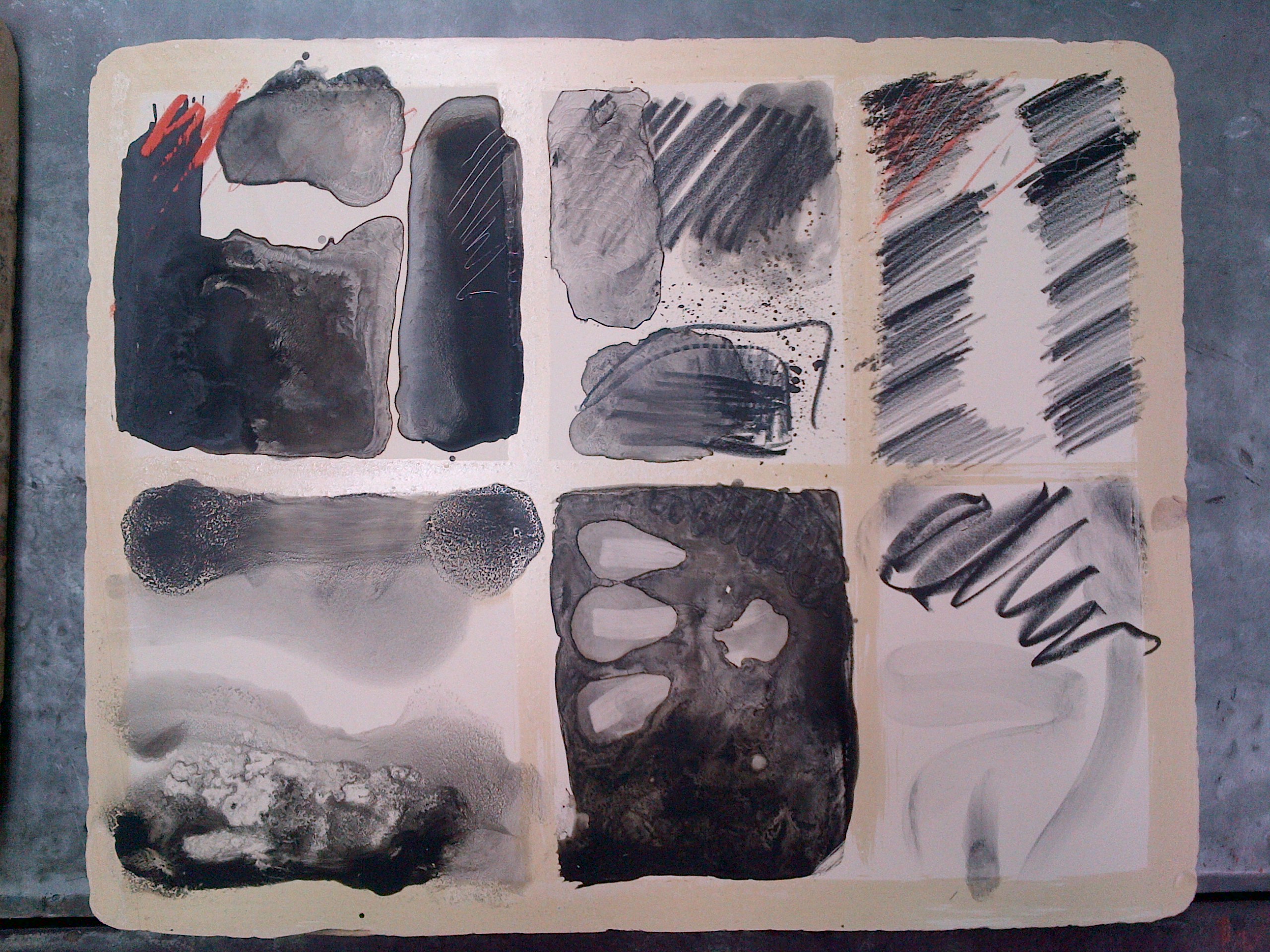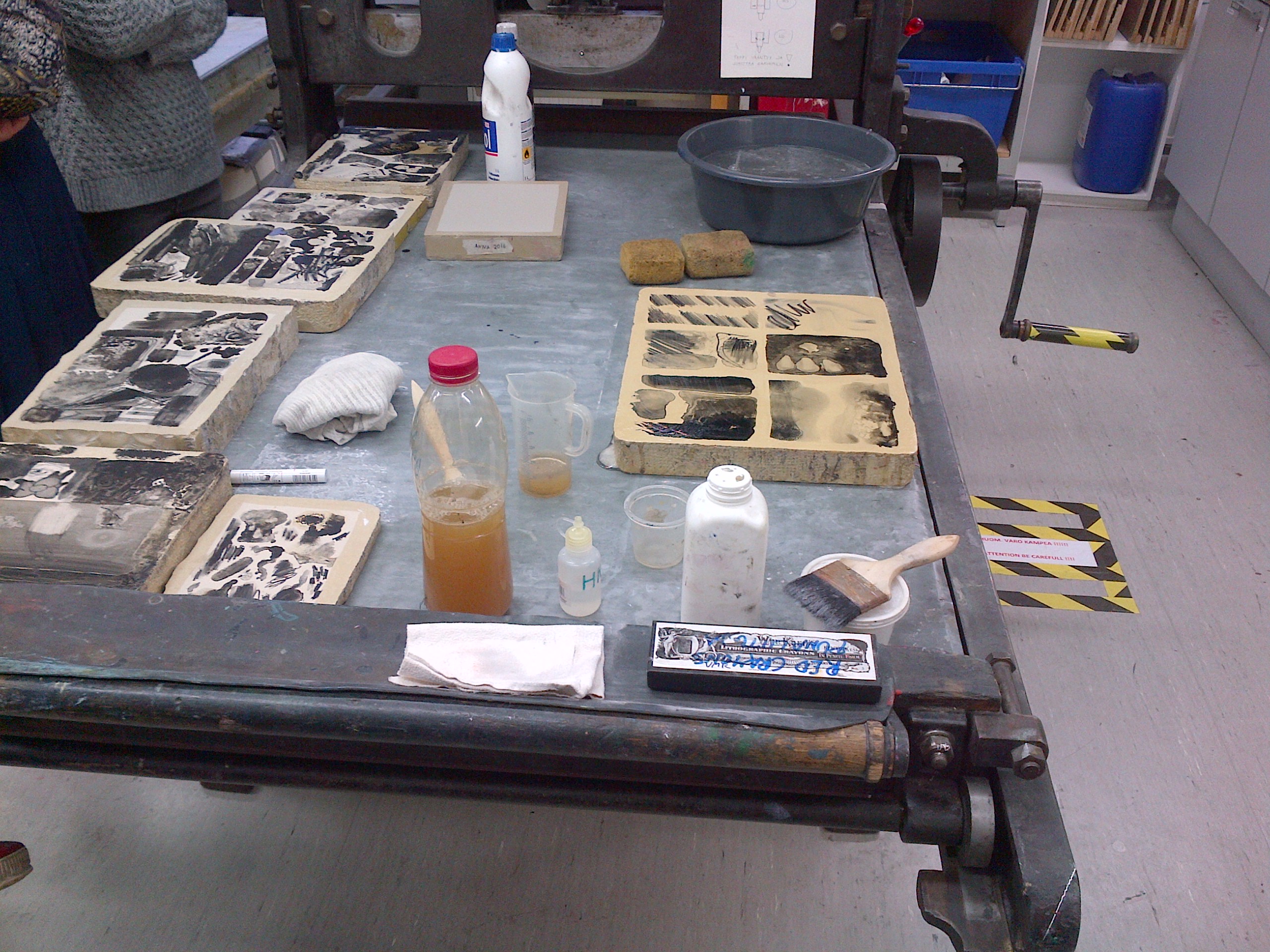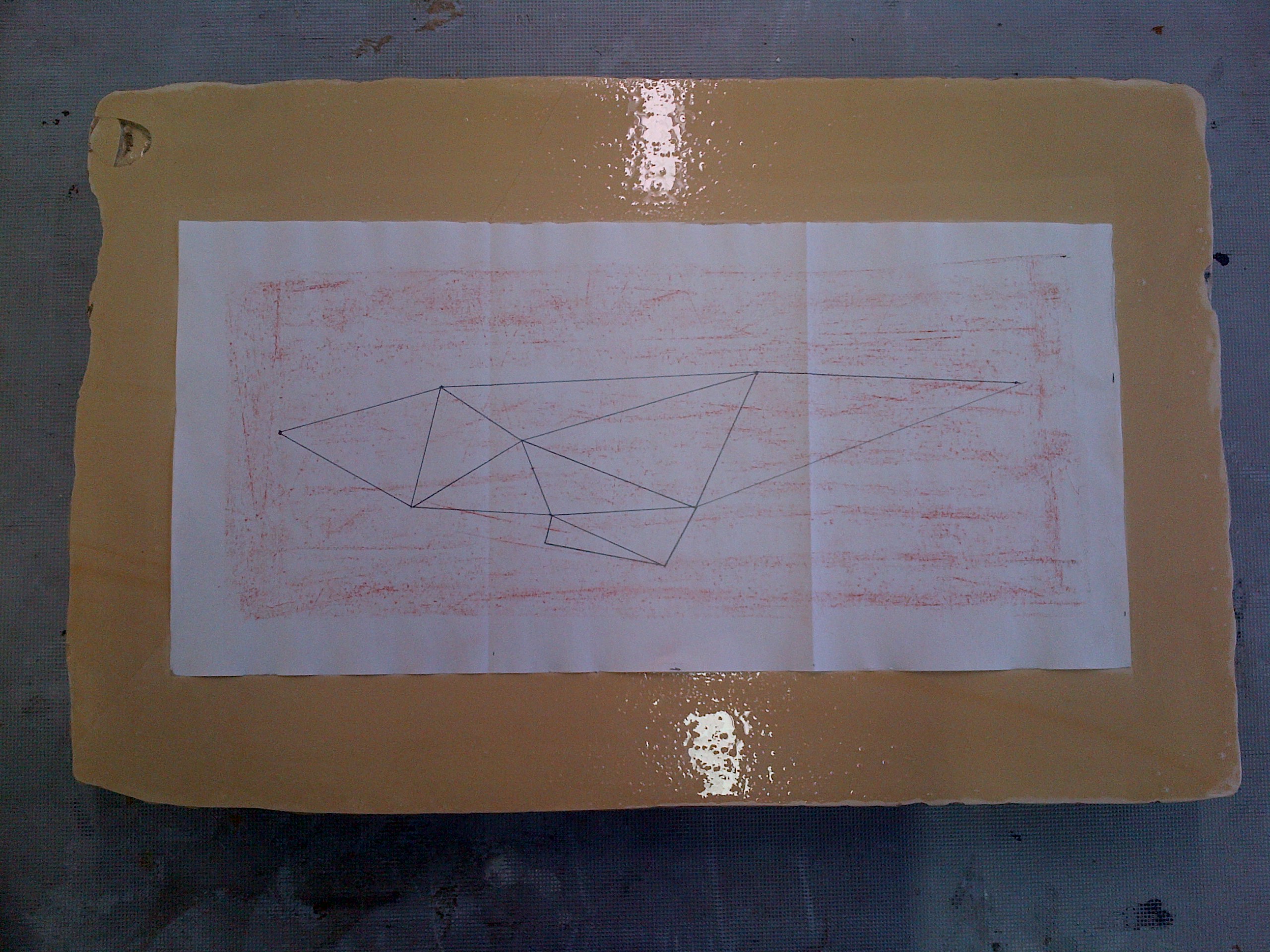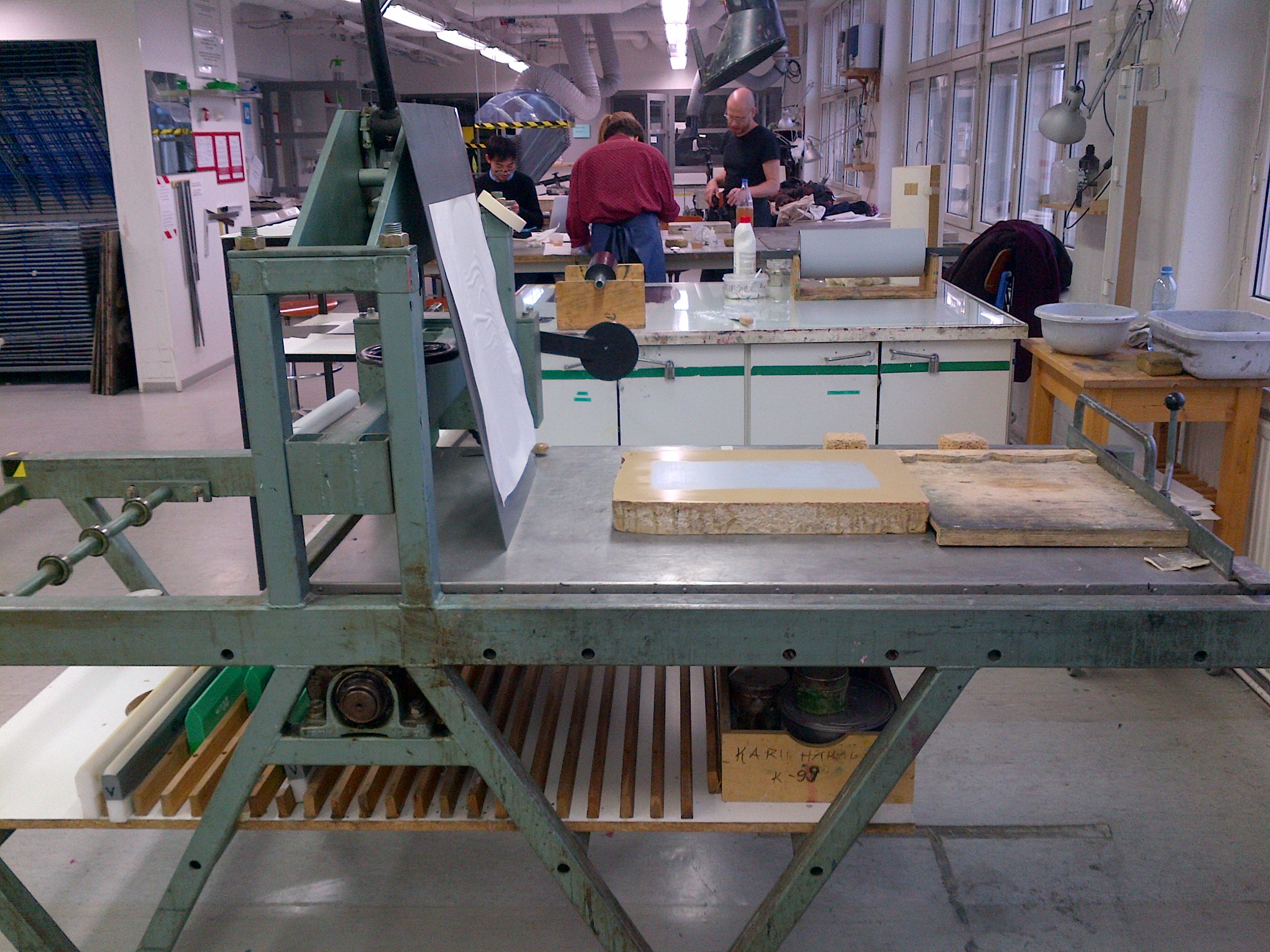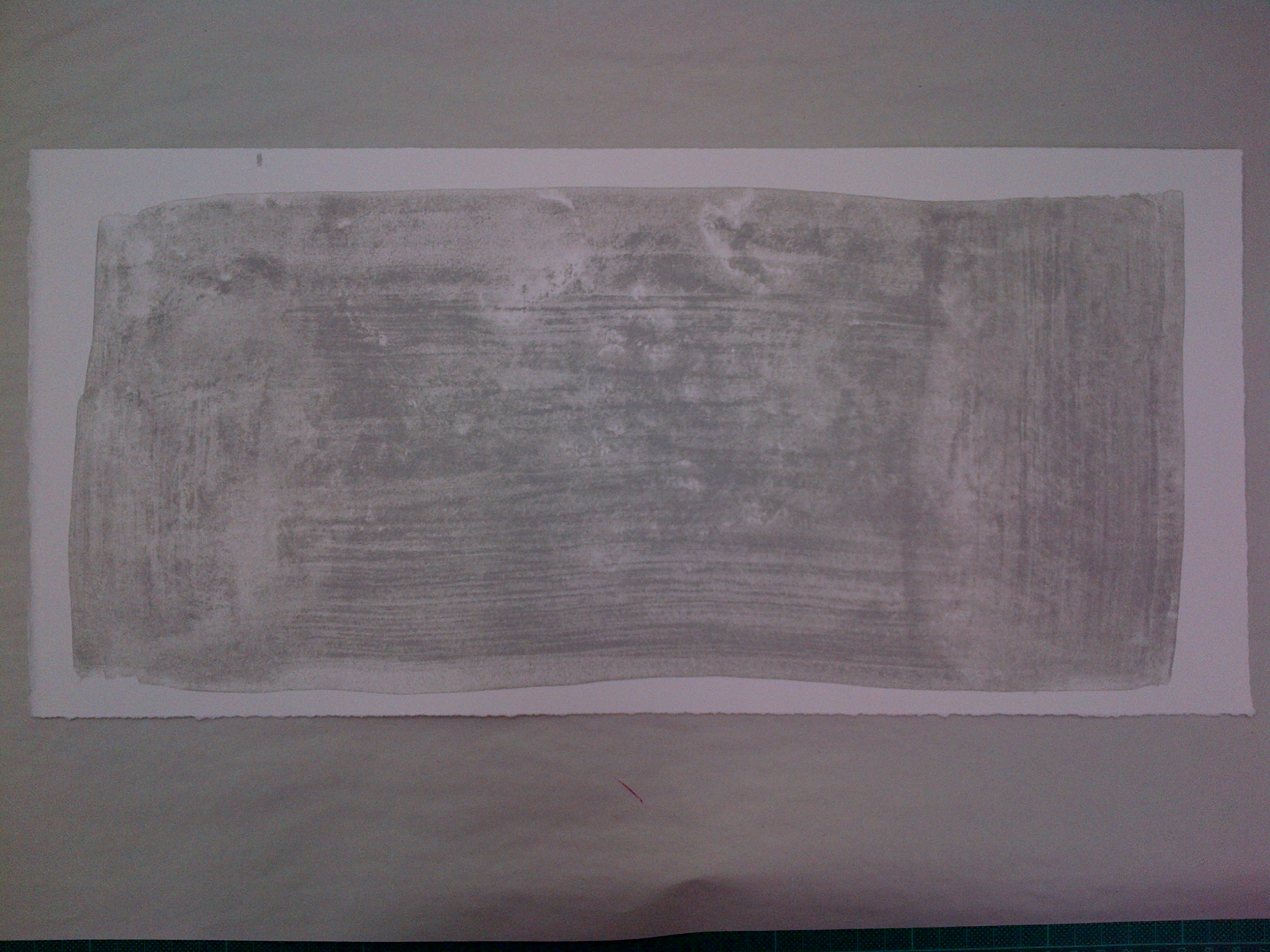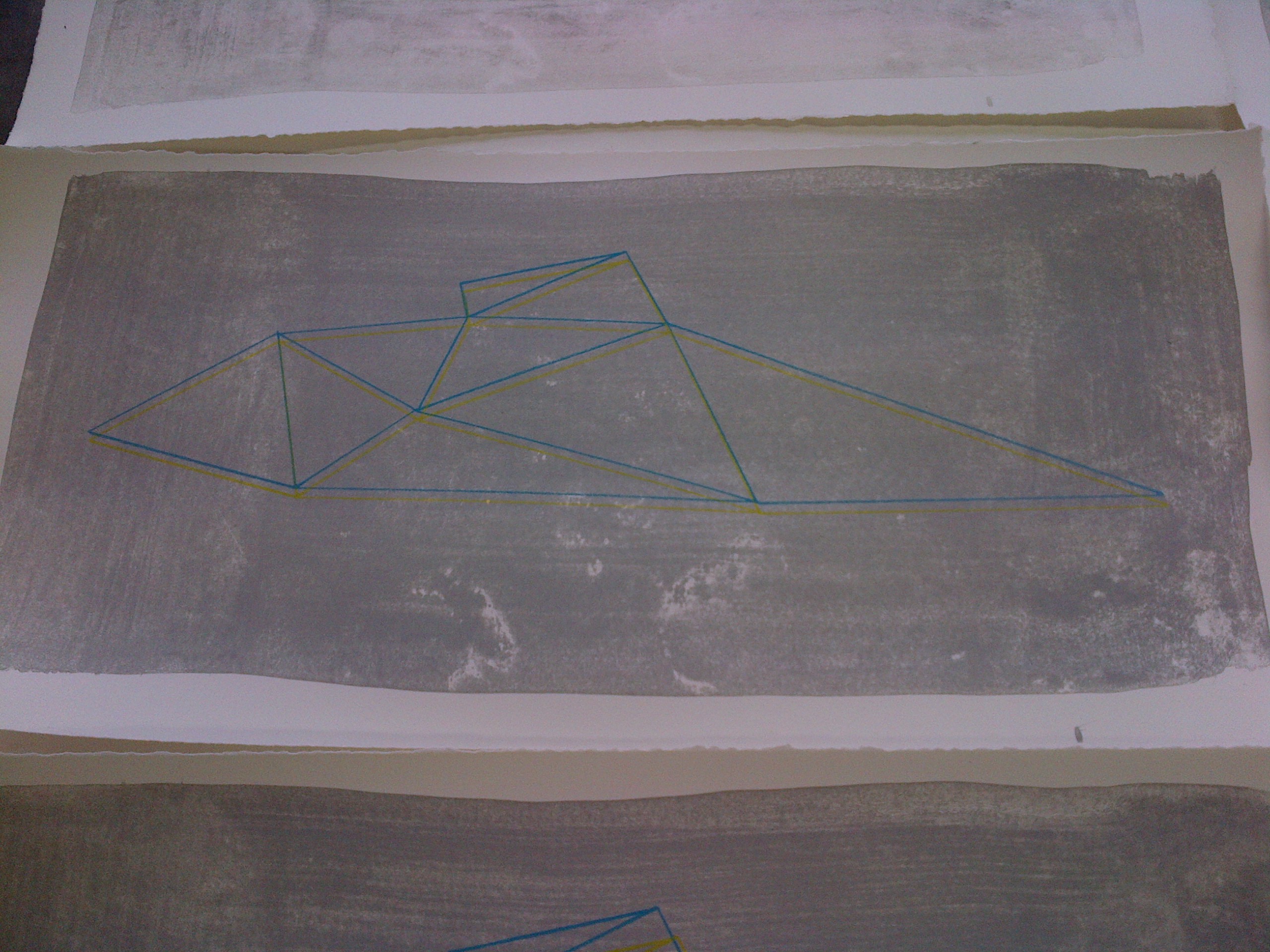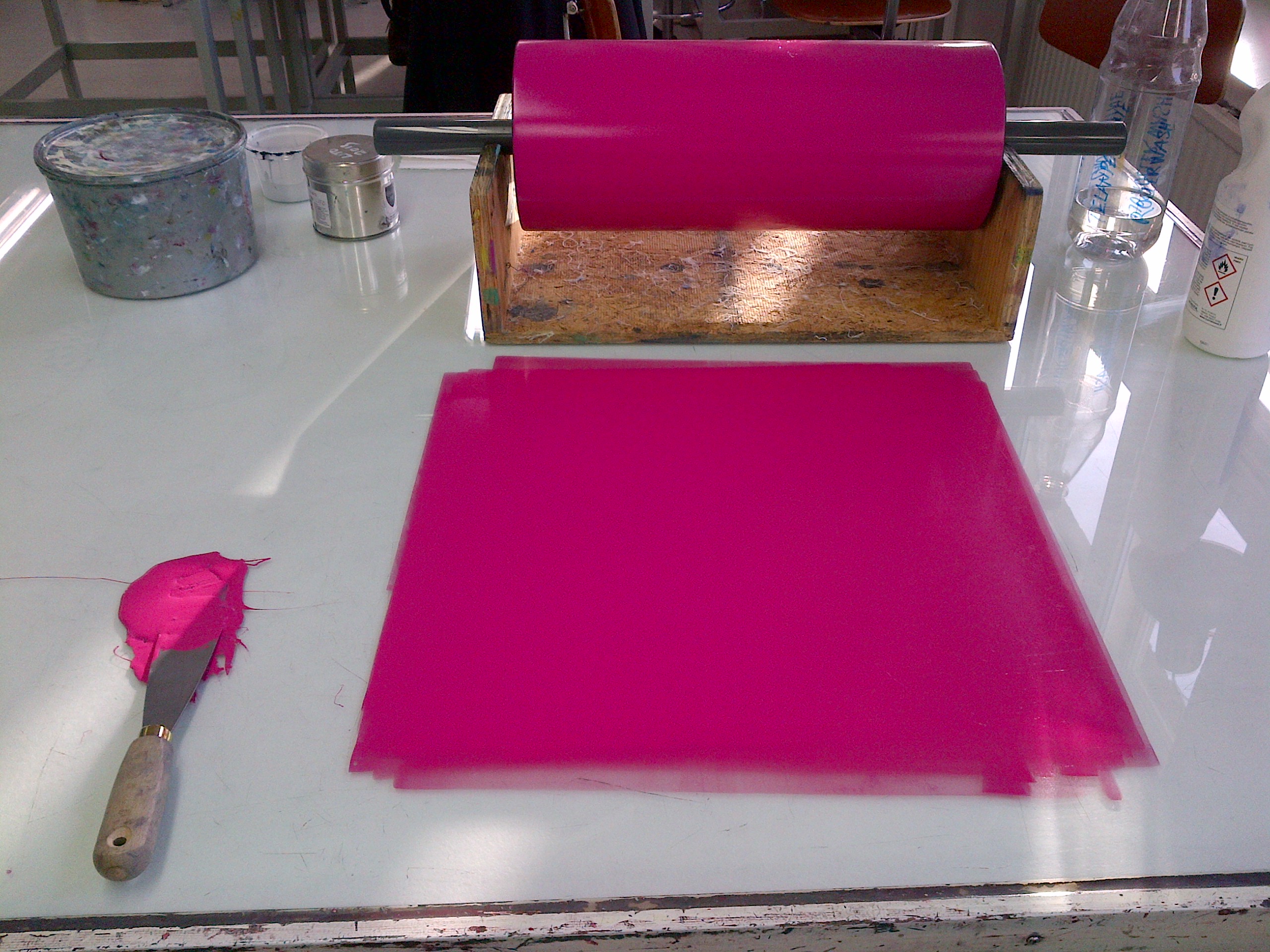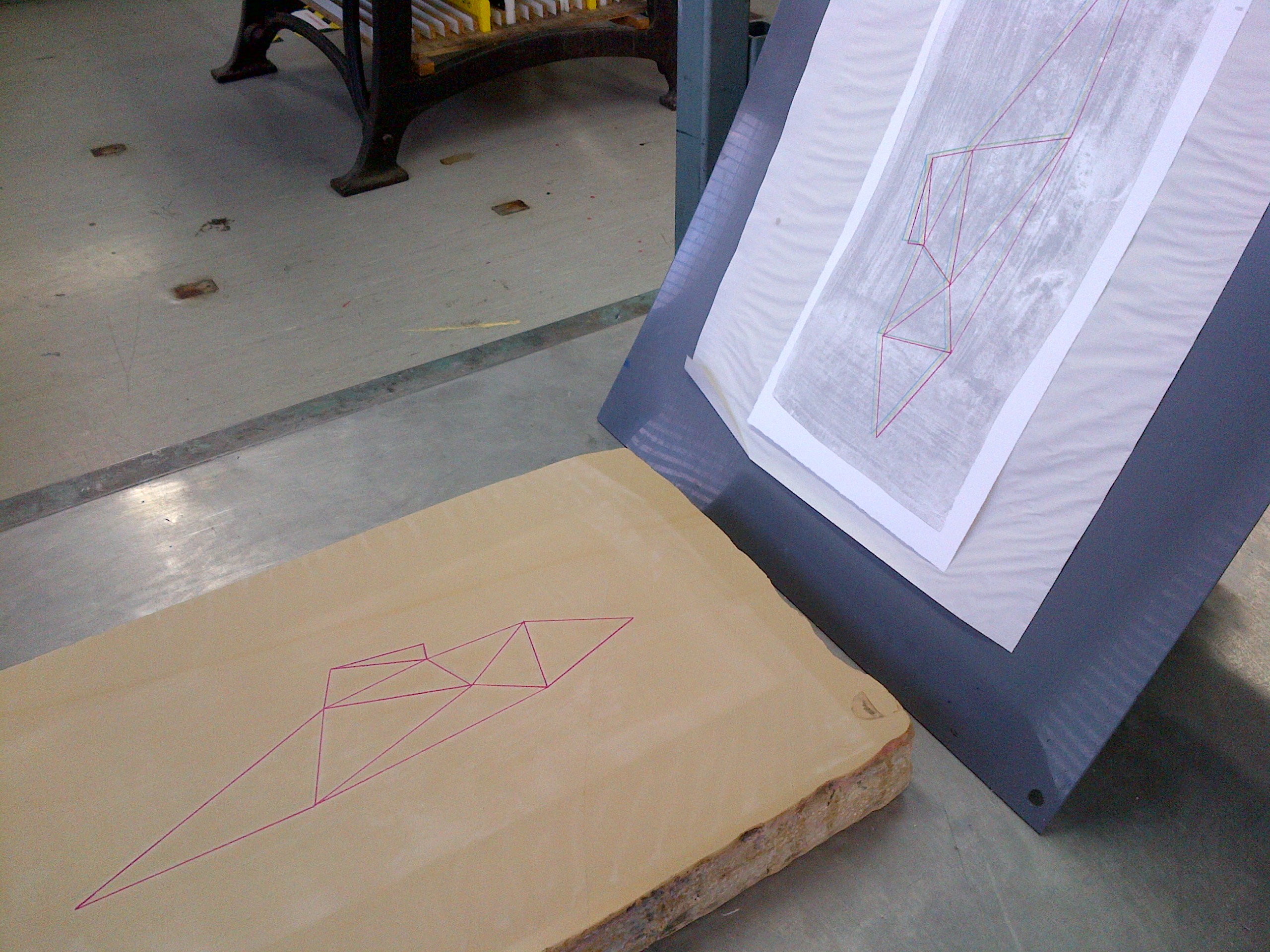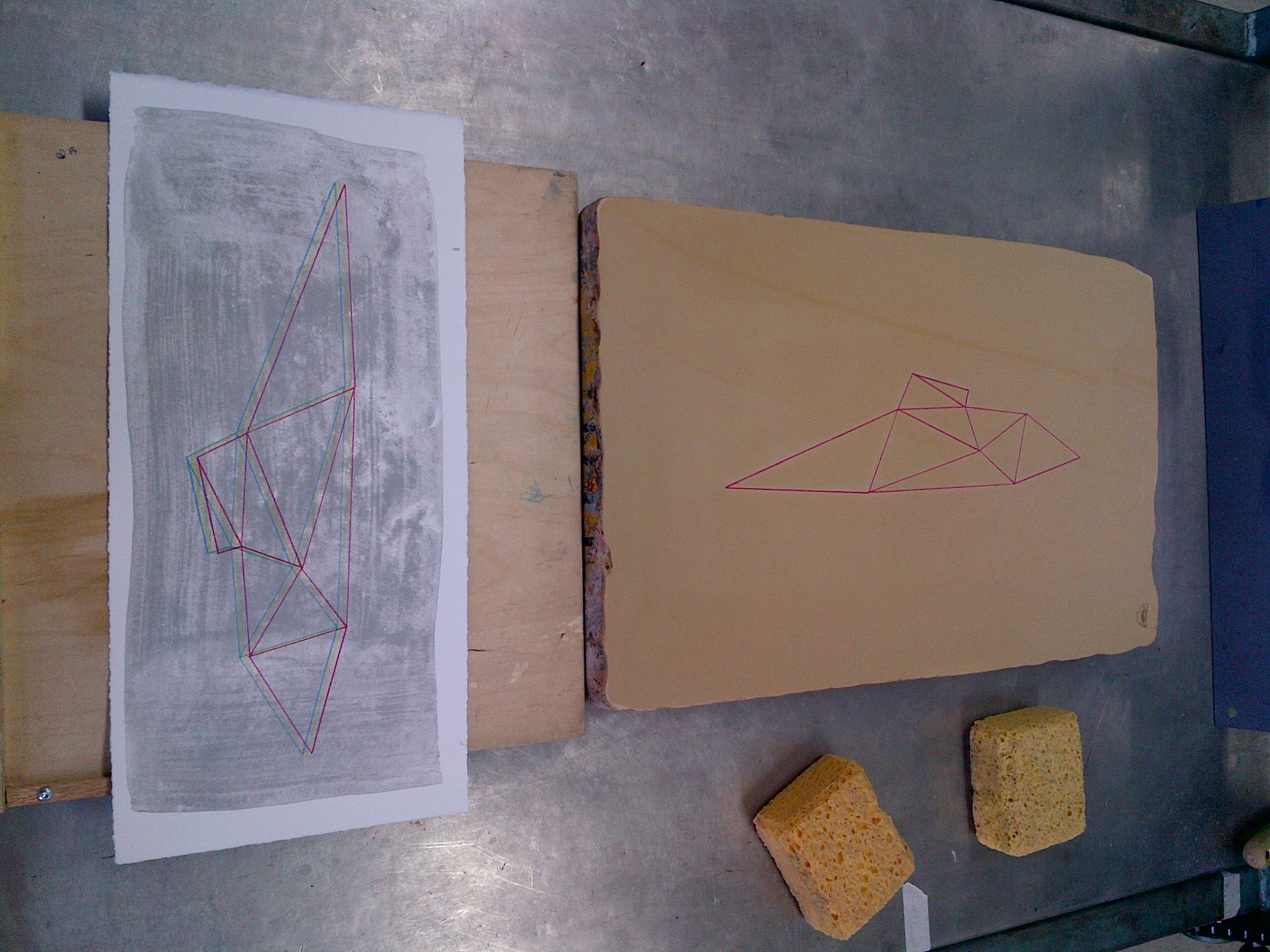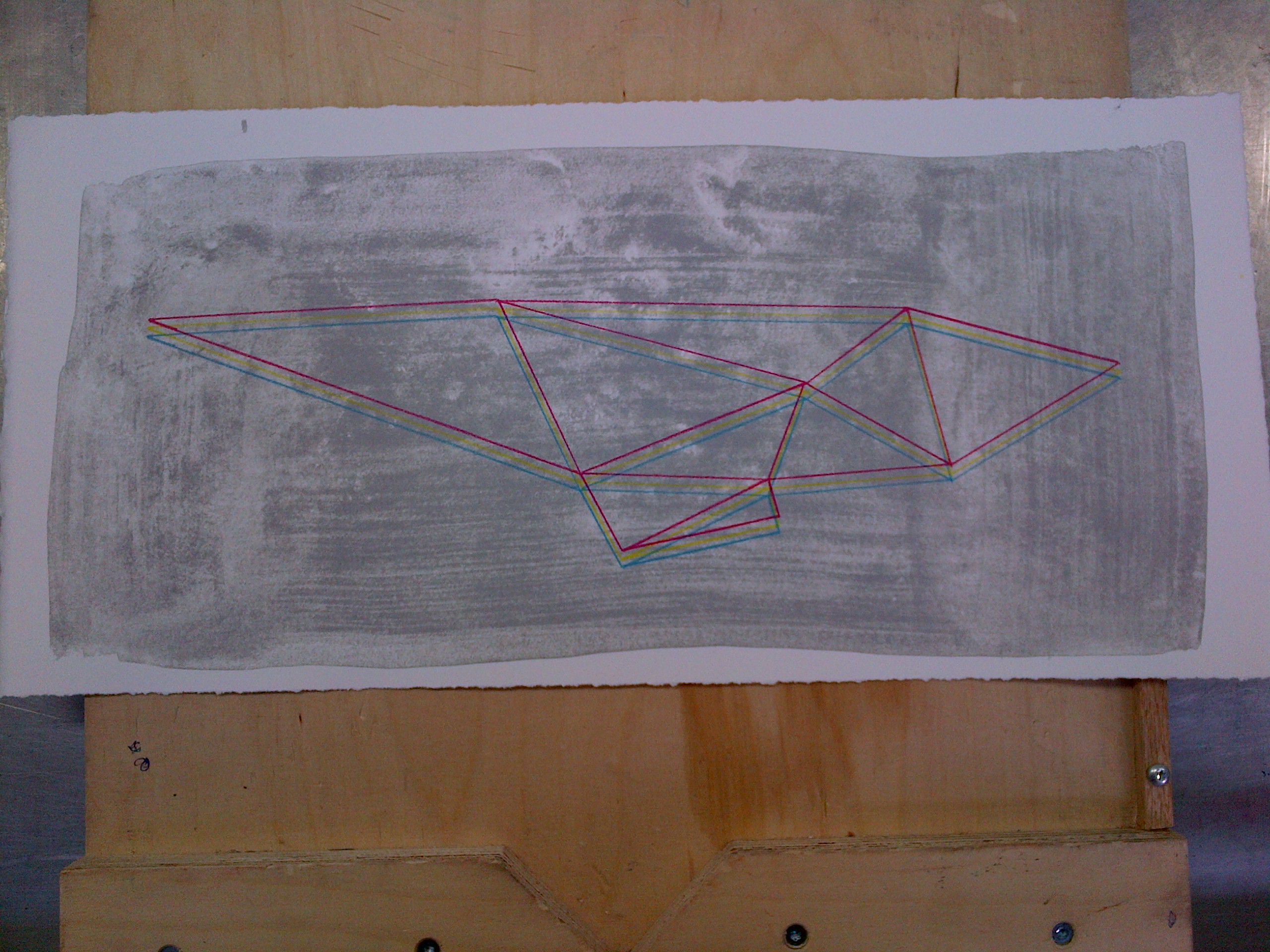Working on a new print in the lithography lab for an artist’s book I’ve made as part of my MA graduation project on the history of the idea of progress and the Struve Geodetic Arc. Lithography is a hugely labour-intensive, complex, and thoroughly exhausting process, but it’s beautifully direct, surprising and incredibly joyful.
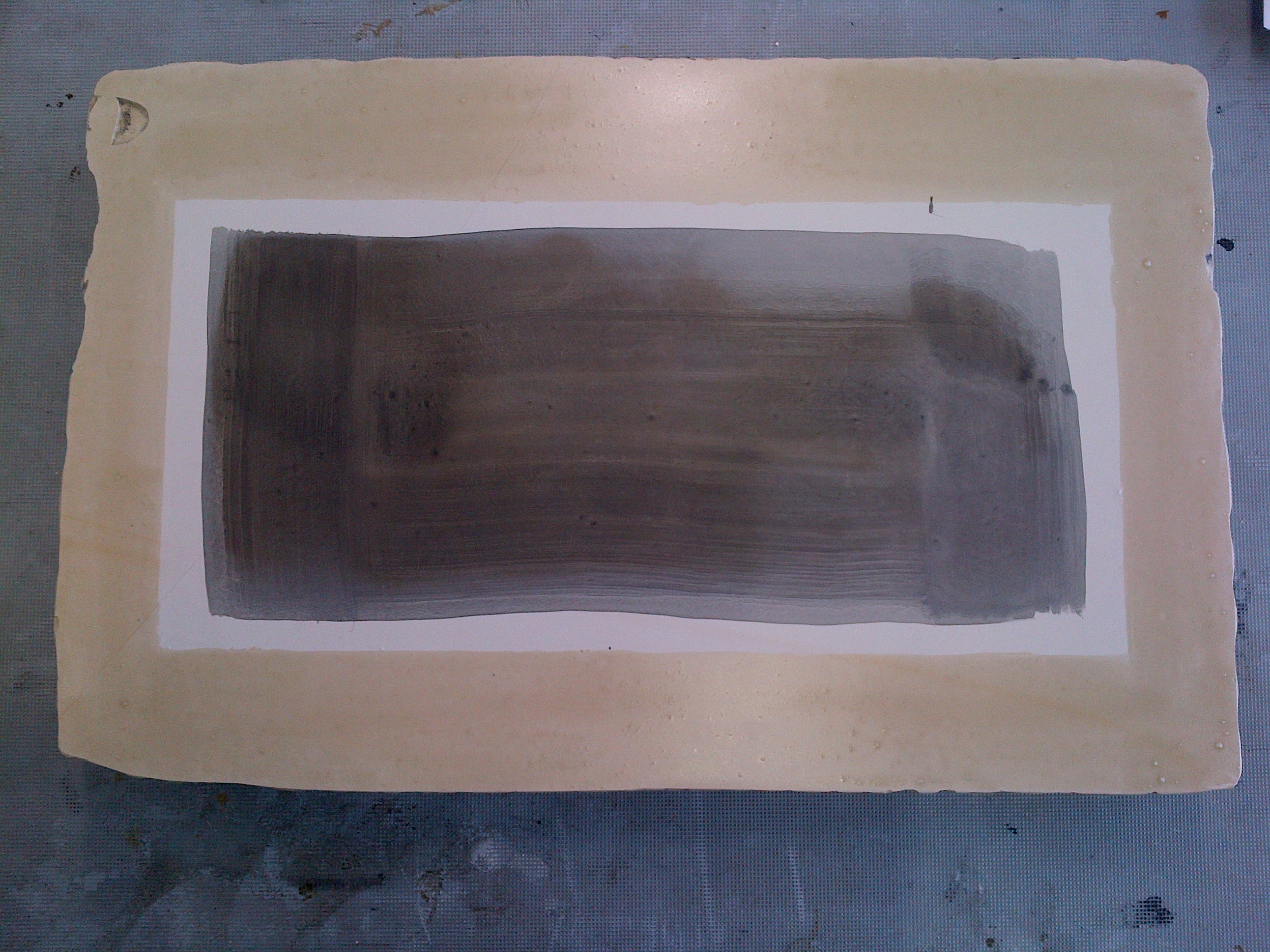
Painting the background layer with a water/tusche wash. The tusche gets a first etch with gum and nitric acid before being swapped out for a basic printing ink. The stone, with the printing ink, is etched for a second time before the basic ink is washed out and exchanged for the final printing ink.
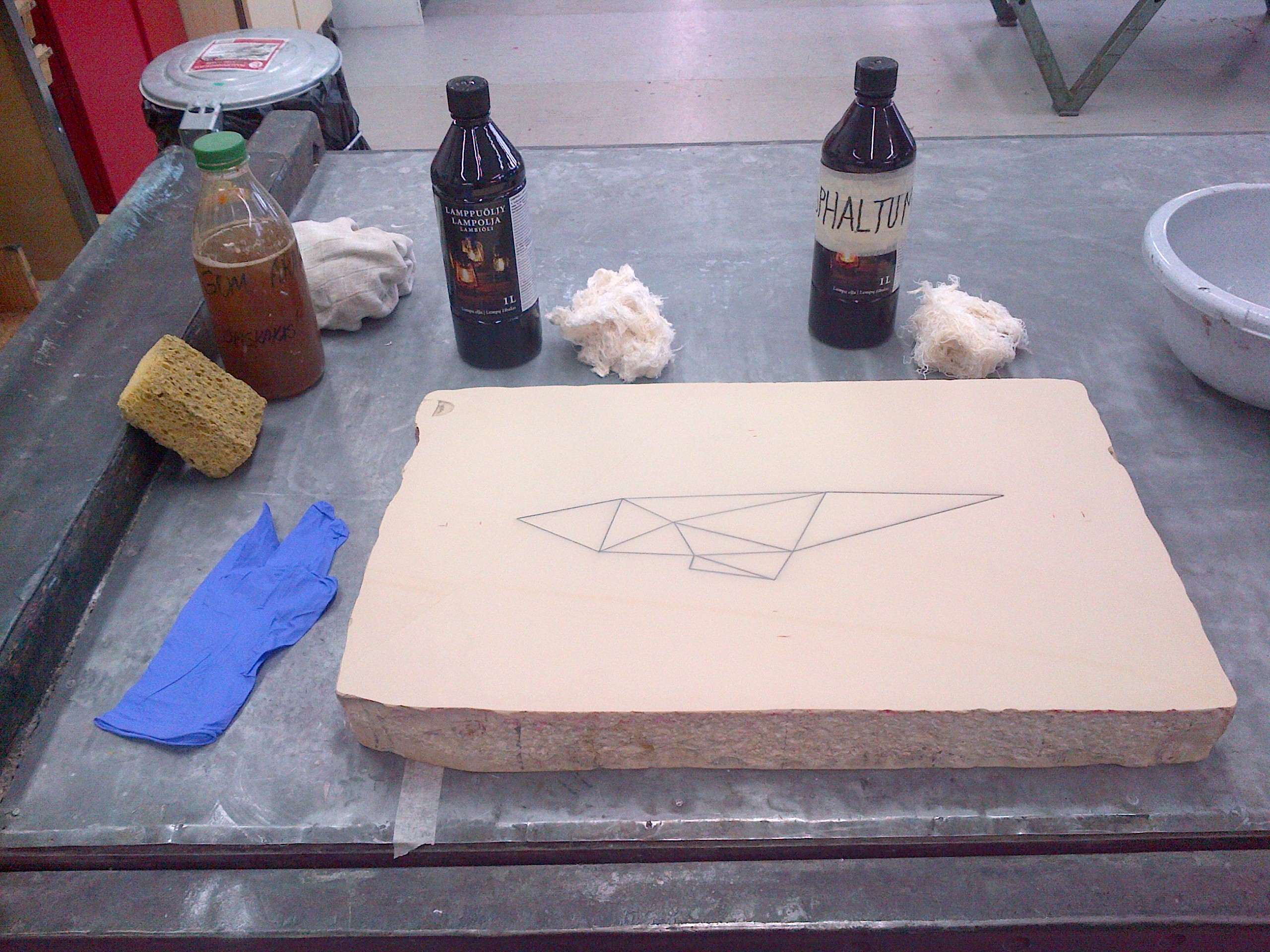
The overlay – drawn directly on the stone with a 9B graphite pencil – it represents 3 different series of survey measurements in northern Finland, from those of Maupertius in the 17th century to those of the Struve Geodetic Arc in the 19th century to those made by the Finnish Geodetic Institute in the 20th century. Here, I’m about to rub out the pencil and prepare the stone for the basic printing ink, also called roll-up ink.
